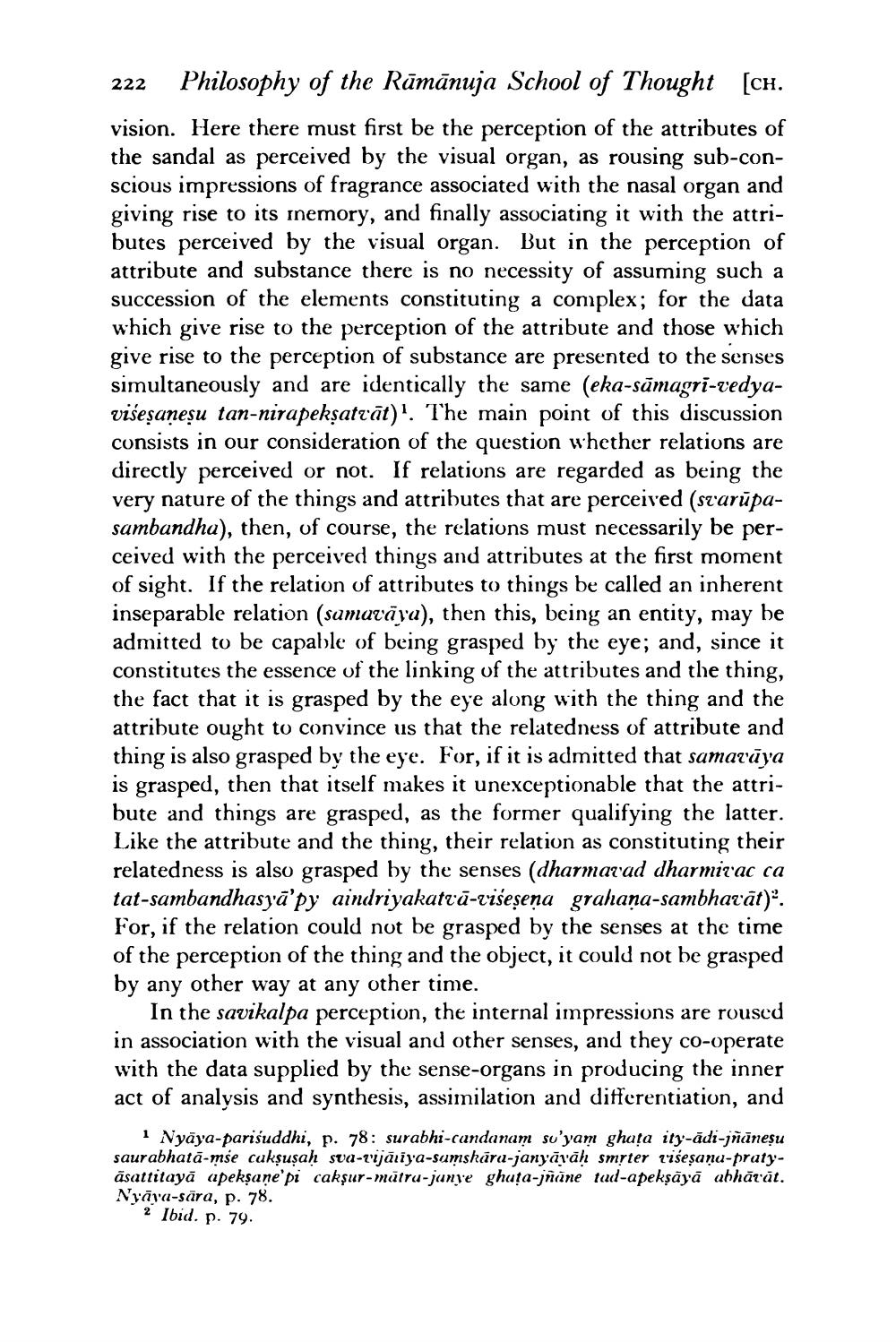________________
Philosophy of the Rāmānuja School of Thought [CH.
222 vision. Here there must first be the perception of the attributes of the sandal as perceived by the visual organ, as rousing sub-conscious impressions of fragrance associated with the nasal organ and giving rise to its inemory, and finally associating it with the attributes perceived by the visual organ. But in the perception of attribute and substance there is no necessity of assuming such a succession of the elements constituting a complex; for the data which give rise to the perception of the attribute and those which give rise to the perception of substance are presented to the senses simultaneously and are identically the same (eka-sāmagri-vedyavišesaneșu tan-nirapekșatrāt)". The main point of this discussion consists in our consideration of the question whether relations are directly perceived or not. If relations are regarded as being the very nature of the things and attributes that are perceived (starūpasambandha), then, of course, the relations must necessarily be perceived with the perceived things and attributes at the first moment of sight. If the relation of attributes to things be called an inherent inseparable relation (sumavāra), then this, being an entity, may be admitted to be capable of being grasped by the eye; and, since it constitutes the essence of the linking of the attributes and the thing, the fact that it is grasped by the eye along with the thing and the attribute ought to convince us that the relatedness of attribute and thing is also grasped by the eye. For, if it is admitted that samarāya is grasped, then that itself makes it unexceptionable that the attribute and things are grasped, as the former qualifying the latter. Like the attribute and the thing, their relation as constituting their relatedness is also grasped by the senses (dharmavad dharmirac ca tat-sambandhasyā'py aindriyakatrā-višesena grahana-sambhavāt). For, if the relation could not be grasped by the senses at the time of the perception of the thing and the object, it could not be grasped by any other way at any other time.
In the savikalpa perception, the internal impressions are roused in association with the visual and other senses, and they co-operate with the data supplied by the sense-organs in producing the inner act of analysis and synthesis, assimilation and differentiation, and
Nyāya-parisuddhi, p. 78: surabhi-candanam su'yam ghața ity-ādi-jñānesu saurabhatā-mse cakşușah sua-rijāriya-sumshāru-janyāvāh smrter riseșanu-pratysāsattitayā apekşane pi cakşur-mutru-junye ghuta-jnane tad-apeksāyā abhāvāt. Nyāya-sära, p. 78.
2 Ibid. p. 79.




